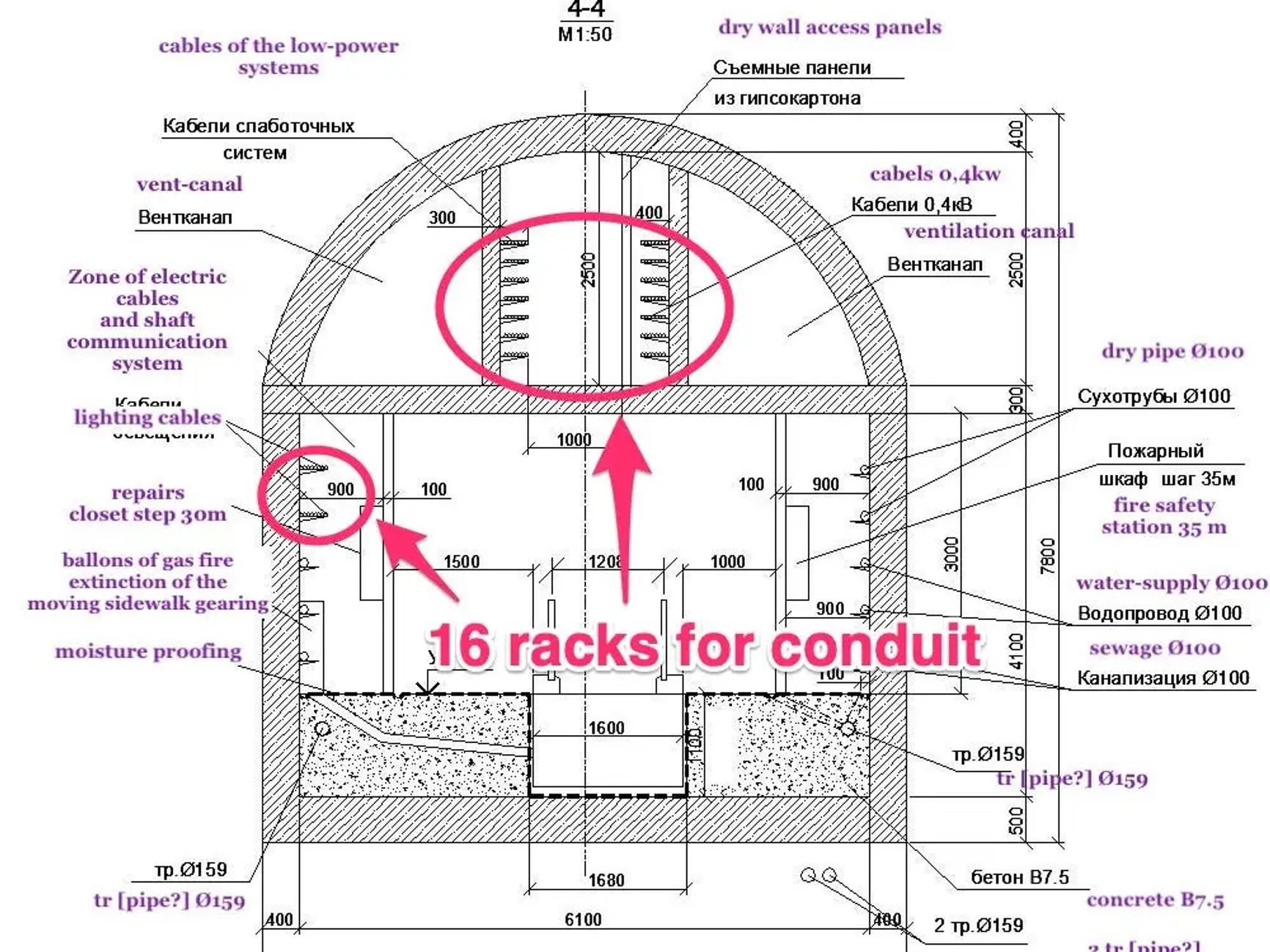
Diagrams and technical drawings of Vladimir Putin's “palace” near Gelendzhik have been revealed by news website Business Insider. According to the publication, the diagrams have been freely available online since at least 2016, having been posted on the website of the now-defunct contractor “Metrostil” (“Metro Style”) as an example of the work the firm had done. On the diagrams, the sprawling estate is labeled a “boarding house.”
The drawings show that in addition to the overground part of the estate, there are multiple underground structures beneath the main residence: fortified rooms, tunnels, as well as an elevator that goes down to a depth of about 50 meters from the building. The underground part of the estate is equipped ventilation, electricity, water, sewage, and communication cables.

A cross-section of the hillside shows two tunnels connected by an elevator, at right.
Metro Style via Wayback Machine; annotations by Business Insider
Two separate tunnels six meters wide and 40 and 60 meters long are surrounded by a 40-centimeter layer of concrete which “bears signs of being blast-proof.” Whether the tunnels can actually withstand a bomb strike is unclear. According to one of the publication’s experts, “the ability to withstand the impact of a nuclear blast or a bunker-buster bomb would depend on two factors that aren't in the diagrams — how the tunnels' 15-inch thick concrete shells are reinforced and the material used to fill the area around them.”
The upper tunnel overlooks the slope of a sand dune, while the lower, longer tunnel, is equipped with a moving walkway and goes directly to the shore of the Black Sea.

Two entrances to the underground tunnel complex are visible on the hillside beneath Putin's palace.
Aerial photo by ACF (FBK) / Business Insider
Thaddeusz Gabryszewski, a structural engineer familiar with defensive structures, commented on the tunnels:
“These tunnels have everything for safety. A fire suppression system, water, sewage. They are designed for someone who wants to survive or escape. But it's not just an emergency exit, it's a full-fledged emergency replacement for the palace complex.”
The tunnels show several features that suggest Putin commissioned the structure with “worst-case scenarios in mind,” according to the publication. 16 cable racks, each about 30 cm (1 ft) wide, embedded into the wall of the lower tunnel, are of particular note.
These racks are designed for the “conduit” cables that can carry electricity, lighting, copper wire and fiber optic cable needed for a command post.

A cross-section showing the interior of the lower tunnel, which includes a moving walkway leading to the beach.
Metro Style via Wayback Machine; annotation and translations by Insider
Neither the Moscow-based company that acquired Metro Style, nor Kremlin spokesman Dmitry Peskov responded to Business Insider's requests for comment.
Information about the luxury estate near Gelendzhik was published in an investigation by Alexei Navalny's team – the Anti-Corruption Foundation (ACF) – in January 2021. The investigators claimed that the mansion at Cape Idokopas was built for Russian President Vladimir Putin.
The ACF estimated the construction and reconstruction of the main building – the palace itself – at 100 billion roubles ($956 million in 2022). The film about the palace was released a few days after Alexei Navalny’s arrest at Moscow’s Sheremetyevo Airport. The arrest and the release of the investigation led to mass protests in many Russian cities. The authorities responded by prosecuting Navalny's associates, whose organizations were declared extremist and banned. Vladimir Putin claimed that the “palace” did not belong to him and that he had never been there, with the Kremlin saying that the estate is a private venture owned by various businessmen whose names cannot be revealed by the state.
Arkady Rotenberg, one of Putin's closest associates, claimed ownership of the palace shortly after the film was released. According to Navalny's team, none of the property documents point to Rotenberg or any of his organizations owning the building.